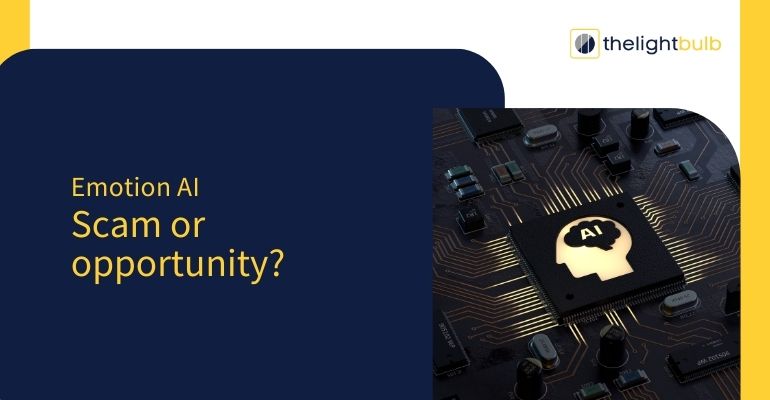
A. Introduction
- The Facial Action Coding System (FACS), with its small-muscle based recognition program, is a very precise body of mannerism, developed for the purpose of identifying micro-movements of facial muscles. The primary element of facial expression theory which highlighted the facial expressions both emerged from the research conducted by two psychologists: Paul Ekman and Wallace V. Friesen in the 1970s.
- User experience (UX) which is also referred to as that kind of experience that a consumer has during the interaction with a business is paramount in ensuring that the consumers get products and solutions which are as they want. The happy customer experience, then, does not only provide more positive satisfaction to them but also makes the customer to be stickier in terms of visiting and repeating the business.

- FACS which stands for Facial Action Coding System is estimating how accurate the facial expressions analysis is and therefore the user experience is improved. While employment of facial movements decoding gives designers direct access to and leads them to the deep understanding of the customer’s meaning, emotion, and behavior, it further works to strengthen the connections that are crucial to their entire experiences.
B. Understanding Facial Expressions
- Through eyebrows, eyes, cheeks, elongation of eyes, lip raising of corners incredible easiness to high sophisticated combinations where the more you are observant, the better you understand the feelings. To some extent, facial expressions whether the lifting of just the eyebrow or the whole smile reveal the motor features of a person’s thought process.
- Microexpressions – short facial expressions that are caught right in a moment or fraction of second – provide examiner with such details to be able to make a condensed conclusion. Such impulsive reactions automatically lead to emerge, which are usually considered as those ones hidden in a human’s inner nature.
- (Facial Action Coding System) allow decoding of these facial expressions but also the breaking into AU (Action Unit) to use in different applications. Perceiving and reliving these situations again, after some time, helps me to make a final determination of all my emotional outbursts. It is FACS that serves as the tool of classifying facial muscle movements and how to present expressions in a detailed manner, so that scholars and designers may do the analysis and evaluation of expressions.
C. This makes it possible to achieve users’ enjoyment and satisfaction which are central to user experience design.
- The further improvement of the researches of user experiences is enabled by the FACS which, having made available the details regarding a user‘s feedback, provides a detailed body of information by depicting the reactions not through language. The FACS method is a very important tool for inclusion in usability trials and user test results; the final stage of the research will be so that the results of the fact-findings and inclination between likes and dislikes can be ascertained.
- Facial expressions used for analyzing user feedback gives designers ability of deducting how people feel and improve additionally to user interfaces accordingly. The designers get the chance to look at the inhabitants facial expressions, which they use to unlock behind the scenes happier moments, painful feelings and room for more the design may need.
- Examples of Facial Action Coding starting to feature in the UX design are advanced cases studies, to illustrate the importance of this method in increasing user engagement and satisfaction. Creation of FACS enabled multi-platform solutions such as website layout optimization, mobile app interface design, and gaming experience enrichment to make user interactions more compelling and personalized are other examples.

D. Enhancing Emotional Engagement
- Facial Action Coding System through a correct facial expression recognition allows designers to convey emotions in the right way addressing the human emotions and consequently users will be attracted. Through the analysis of certain facial expressions and the connection between them and a particular emotion, the designers can measure then replicate these emotional states by utilizing graphical and interactive aspects.
- Implementing Facial Action Coding System insights in design process will allow designers to develop attractive solutions that elicit different emotions through various users. It doesn’t matter whether it is the experience that you are looking for involving the emotional levels of exubrancy, calmness or the conviction, FACS data can be a guiding star for the designers is the use of the colors, images and the text styles to offer the design that evoke emotions. For instance, studies have shown that the multisensory experience helps people make more accurate judgments when shopping.
- Many of these brands get the attention and emotional involvement of the consumers using FACS in order to facilitate tailored experiences that therefore drive stronger connection to the brand. With the use of Facial Action Coding System program brands can delink marketing campaigns, launches of products and the interactions with the costumers and bring the memories that a person can associate the brand with more deeper way.
E. Personalization and Adaptation
- The human-computer interaction that is next level is made possible by Facial Action Coding System as it detects and adjusts the interface based on the each unique facial expression. Developing FACS interactions personalized onto native content, recommendations and individual user interfaces in actual time can create much more meaningful and engaging experiences for each player.
- In-real-time a conversation interaction through the facial expressions provides personalized reactions and readjustments of convenience and user’s engagement satisfaction. Whether it May be a virtual assistant reply modification or a game difficulty level adaption, a FACS-driven personalization empowers the interfaces to respond to user emotional states as well as preferences intuitively.
- Ethical awareness is central in the framework containing FACS-driven personalization, and all measures should be taken to make sure that user data is confidential and informed consent is given. Designers should make sure Facial Action Coding System data is used in the public interest, and they must specify transparency so people would be able to recall their personal data, and high level of data security when transferring it.
F. Overcoming Challenges and Limitations
- When bias becomes a paramount issue in analysis by FACS standardization considerations like culture differences and facial variations must be taken into account. Designers should by all means be sensitive to cultural variations and context-specific meanings of facial expressions so as to ensure that their interpretation of the data obtained with the help of FACS facial coding is authentic.
- E. The necessity of modified analysis to FACS approach due to the cultural differences in facial expressions comes from the variety of different cultural contexts. Researchers as well as designers should team up with a variety of communities represented, and experts facilitating cultural psychology to create culturally adapted forms of FACS and approaches.
- To counter and balance concerns about privacy related to facial data the following strategies are considered: Clear communication, strong data protection measures and mechanism for user consent Designers are required to observe stringent rules and regulations pertaining to privacy, for instance, GDPR and CCPA, get the consent of the users before collecting and analyzing facial data for FACESc purposes.

G. Future Directions and Innovations
- Firstly, there is no denying that human faced emotion analysis in the field of Facial Action Coding System, the ability of which is based on new technology is making it easy. Though the future of FACF remains quite as a mystery, the next generation is going to bring in new algorithms, which will be AI driven along with the technologies that will monitor facial expressions by means of wearable devices. The field will undoubtedly expand, creating the potential of a new level in the field of UX design and human-computer interaction improvement.
- While predictions for the further applications of Facial Action Coding System in user experience design may include the expansion of use cases and its integration with the new technologies, AR (augmented reality) is the one to maybe be mentioned as an example. With AR experiences become more immersive and interactive, in-depth study (FACS)- analysis will take a key role in the investigation of users’ emotions as well as in a prompt response to users’ employees.
- Now, a myriad of ways of researching and advancing this kind of interface are presented, becoming cornerstones of further technology advancements in the UX field. It might take the form of interdisciplinary work, the emerging discipline of neuroaesthetics and affective computing, and, eventually, totally different forms of human-computer interactions, rendering amazing futures for FACS-driven UX of upgraded digital experience.
H. Conclusion
- Introducing FACS approach in the development of user experience introduces beneficial implications such as deeper representations of user emotions to ingredients for achieving high user engagement and satisfaction. Through FACS, the designers of today have to ability to empathize, communicate, and stir up positive emotions that will result in both the customer and business’ satisfaction.
- The designers are promoted to evaluate FACS as a significant asset in the making of more enticing users’ experiences and connections. Although it is one capability in their design process, but the use of FACS analysis can go a long way in depicting user emotions and preferences, and this can consequently lead to designs that are more impactful and receptive by the audience.
- The subject of UX (User Experience) is not excluded from this fact either with FACS paving the way for new design pattern and the emerging of another dimension of user expectation and need. Going forward, tech companies will use FACS and other social tools to develop interfaces that feel and work more human-like and are emotionally intelligent, thereby attracting more users to the product and consequently enriching people’s everyday lives.











